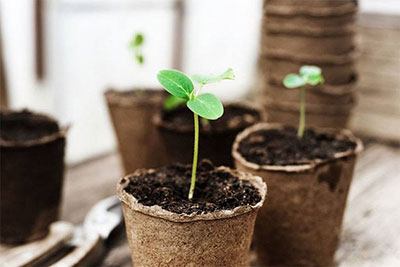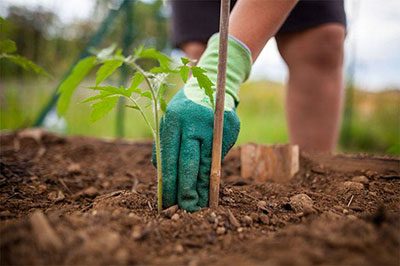What I had in mind when I started my first vegetable garden was that I wanted to provide my family with fresh produce. There is nothing more refreshing than freshly prepared tomatoes and lettuce for lunch.
I struggled for a while in finding the perfect vegetable garden layout plans and spacing that are suited to my backyard.
But with some thorough research, I have developed a garden that has been loved by my entire family. I am aiming to assist you through this post in doing the same thing for your garden.
Table of Contents
Planning your garden: Step by step
1. Things to consider
Sunlight is essential in growing your plants. You have to make sure that your garden’s location is strategic enough.
Several vegetables, including those that produce fruits, will yield more if they receive at least six to eight hours’ worth of direct sun exposure. It is okay to plant leafy and root vegetables in an area with partial shade.
In choosing the best spot, it is advisable to check the area several times a day in order to note when and how long the sun shines on it.
Avoid planting your vegetables in narrowed and walled spaces.

You will get plenty of water supply during rainy seasons. However, you also have to strategize your water source in the event that rain does not come. As soon as the season changes, it will be more convenient for you if you have chosen a garden location that is nearby a water source.
Do not plant your vegetables where other trees or large shrubs are growing. These plants and your vegetables will be robbing each other with water and nutrients from the soil. In choosing the best soil, go with loose, fertile, and well-drained.
Try avoiding very sandy or heavy clay soils. Make sure that you dig out and remove the caliche.
Also, avoid areas where there are too many alkali salts or where Johnson grass, nutgrass, or Bermuda grass grow.
2. Formulating your garden layout
Starting your own garden does not require you a huge space.
If you live in an apartment or any small living condition, you can opt to grow your vegetables in containers. Choosing beans and peas will let you increase your product despite the limited garden space, as these vegetables can climb upwards on your walls.
The first step in achieving the best vegetable garden layout plans and spacing is to create a sketch of where you intend to plant. Make your own gardening notebook or journal starting with the size of your location or where you plan to place your containers.
Next is to decide what kinds of vegetable species you are going to plant. In doing this, you have to consider your family’s preferences and needs, the climate in your location, and the practicality involved in your living condition.
Place marks on where you have decided to plant your vegetables. It is important that you provide enough growing space between each seedling.
You also have to write down the dates on when to plant specific vegetables in accordance with the harvest seasons and individual growth process. It is ideal to place vegetables that are the same harvest time near each other.

3. Implementing garden layout
Your vegetable garden layout, in general, follows a south-to-north pattern. This will provide your vegetables with the needed air circulation and sun exposure.
Suppose you have an issue with garden space. In that case, you have an option of planting bushy types of vegetables such as tomatoes, broccoli, beets, turnips, beans, onions, radishes, and carrots, among many others. Make use of your vertical space by growing climbing crops.
Tall plants such as peas or beans and corn should be planted on the northern side of your garden. As these plants will tend to grow taller, having them adjacent to smaller vegetables will create unnecessary shade.
The middle part of your garden should house medium-sized vegetables such as broccoli, squash, cabbage, and pumpkins. The shorter crops like carrots, radishes, onions, lettuce, and beets can be planted in the southern part of your garden.
Types of vegetable garden layout
1. Block-style garden layout
Block style does not follow single rows. There are multiple rows aligned together in the growing bed. This is the best option if you want to increase your productivity. This provides a yield that is five times higher than what you can achieve using the usual layout of single rows.
To do this, you can begin planting your seedlings in the rectangular divisions of the soil bed instead of the traditional individual rows. This technique will eliminate unnecessary passage.
There should be an equal amount of space in all directions between the adjacent plants. So let us say you are planting lettuce. The patch should be in three-inch by three-inch centers.
2. Raised bed gardening

The block-style layout is best paired with raised gardening. These two combined will give you increased productivity, and there would be lesser areas to weed out. Because the soil is raised, there is no foot traffic on the growing bed, decreasing soil compaction.
This will also let you plant earlier, as better drainage will keep the water warm faster during spring. Because of the elevation, you can place a cover over the bed during rainy seasons enabling continuous planting. The height will also make it easier for people with difficulties in mobility to continue gardening.
Raised beds are also a good addition to your landscape design. An appealing landscape can be achieved if you create various beds at different heights.
The deeper the beds are, the easier it will be to manage it. You can fill in the bed with around eight to 12 inches of soil, depending on how good the soil below is. The better the soil quality below, the lesser soil you will need in your raised bed.
3. Square foot gardens

In small living spaces, you can create your own four-by-four-square-foot gardens. This is a miniature version of a raised garden. You can use a two-by-six board. By using a string, you can divide these boards into 16 one-foot squares.
Depending on the size of your seedlings, you can start planting one or more vegetables in each of the squares. Refer to the seed packet for information regarding the spacing of your seedlings.
Since you are using a small area, you can invest in blended compost to fill in your square-foot garden. You can choose between poultry or manure, worm castings, or green waste.
The final thought
The passion for gardening has provided our family with moments of fun outside the sun as well as a bounty of vitamin and nutrient-filled meals. I intend to give you the same quality of experience with these vegetable garden layout plans and spacing tips.
I have done my fair share of gardening experimentation, so should you have any questions, just leave them in the comment section below, as I might be able to help you out.
If you love this article, please do not forget to like and share it with your friends and family.
